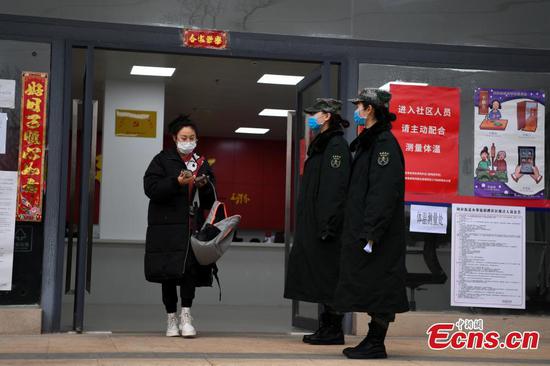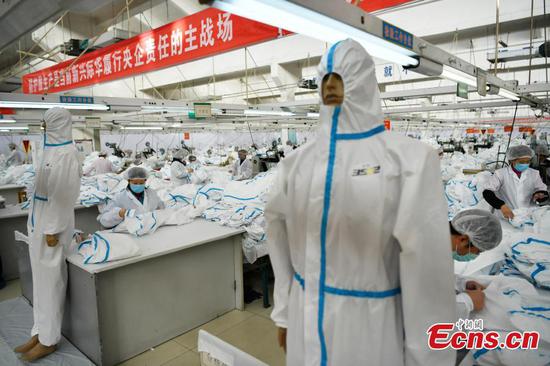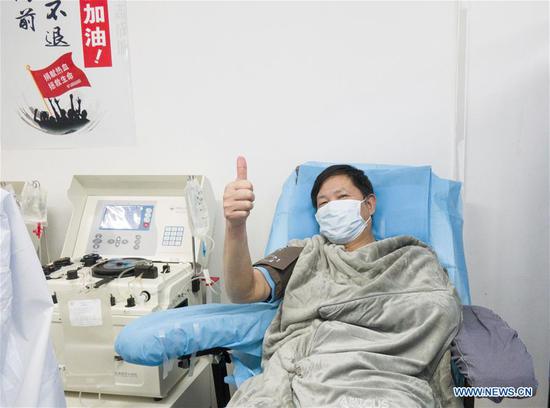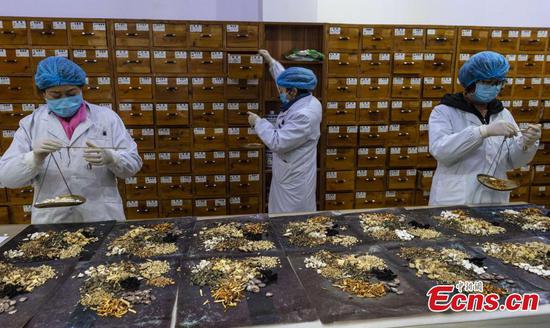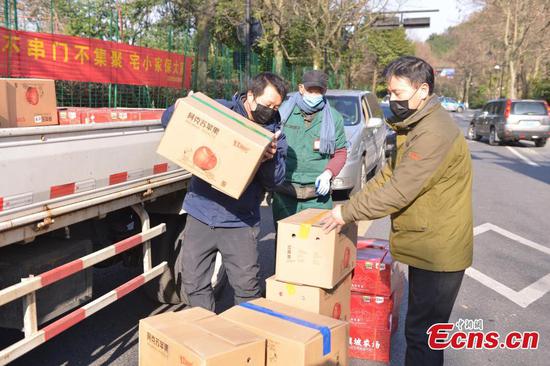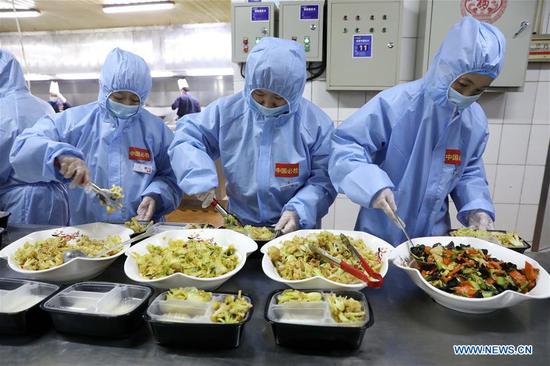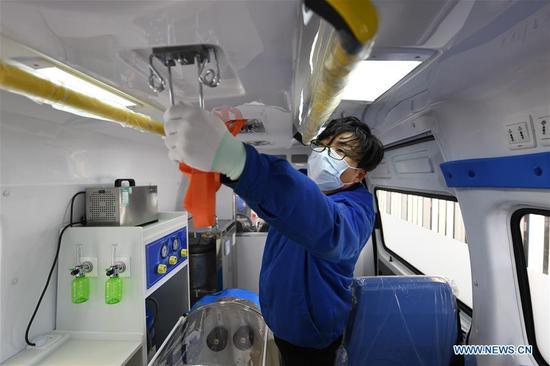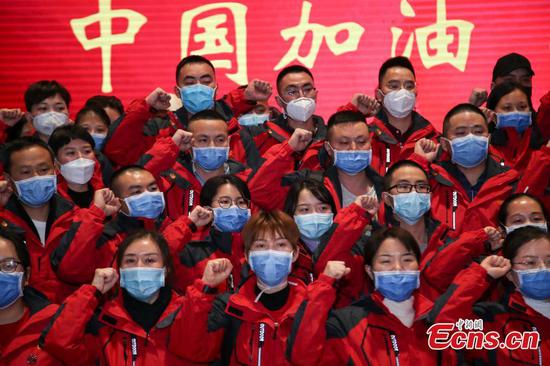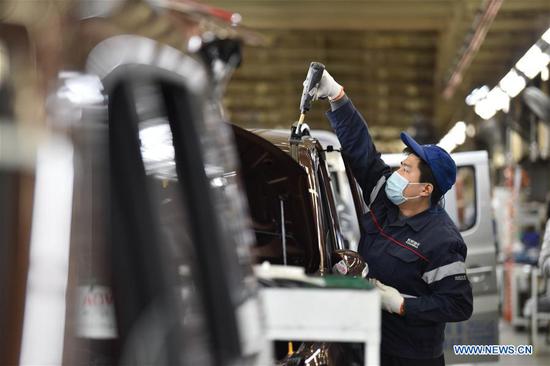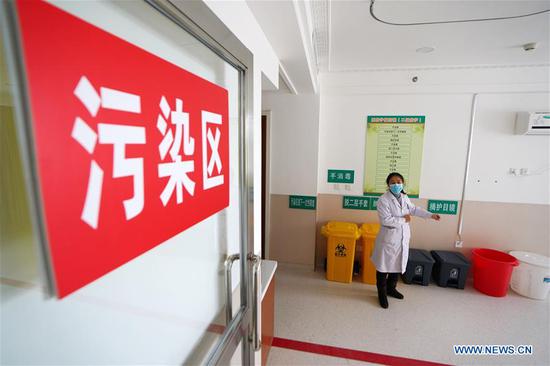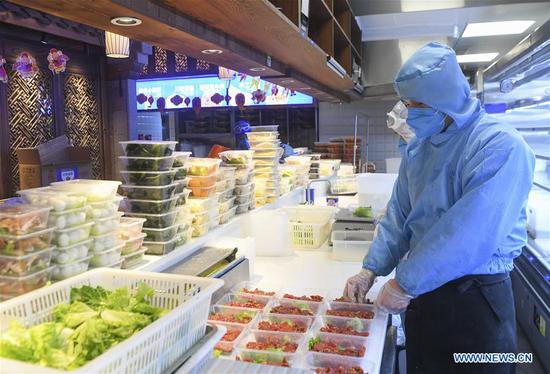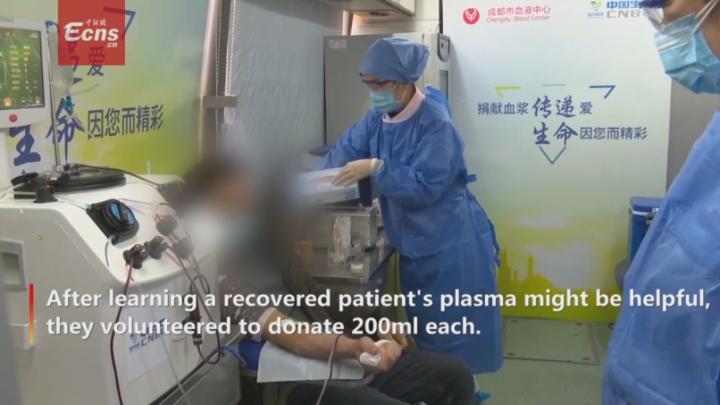
A deliveryman checks fresh food packages at the gate of a community in Yangzhou, Jiangsu province, on Feb 9. (Photo by Meng Delong/For China Daily)
Gao said she found many products are out of stock recently when she checked the apps. She filed an order on Feb 4 whose expected delivery time would be March 21.The online consumer service worker said the delay was caused by the massive number of orders and lack of deliverymen.
Kantar Worldpanel's Yu said there is a significant mismatch between demand and supply at this time, especially in the shortage of fresh produce and labor for inventory management and delivery. The pressure can also be seen in the supply chain and logistics sectors.
Wang Jun, a partner and chief financial officer of Missfresh, said they are taking steps to ensure supply and services. The company employed more workers to help in the pickup, processing and transport of goods at vegetable bases. They also offered subsidies and insurance to frontline deliverymen. Wang added 90 percent of orders are delivered within two hours.
Missfresh's supply of vegetables grew from 500 metric tons per day before the Lunar New Year to 1,000 tons in early February. The supply is expected to reach 1,500 tons to 2,000 tons soon. In addition, the daily supply of eggs will be extended to 2 million.
The number of daily online orders of the Yonghui Superstores chain surpassed 200,000 nationwide on Feb 1 and 300,000 on Feb 8. Consumers showed a preference for vegetables suitable for preservation and staple food items like rice and flour, said Yonghui Superstores President Li Guo.
The supermarket called back employees, increased product inventory and kicked off cross-border purchasing to speed up and bolster supplies. It strengthened regulations on food inspection and price, he added.
Hema Fresh was reported to have hired idle workers at some offline catering companies to meet the sharp rise in food delivery demand.
Hor said successful fresh food e-commerce platforms will be those which build a strong ecosystem and partnership that can weather sudden changes in business conditions.
They should also lead in global and local direct sourcing, advance in their smart logistics network to "enable superior freshness and cost advantage," and leverage data analytics to inform assortment and replenishment decisions.
Ren said the outbreak is incubating an unprecedented occasion to cultivate the shift by customers in their purchase of daily necessities from offline to online channels.
He said the promise of increasing penetration can be seen in the short-term for the online fresh food category. "In the longer term, this spurs the advance of a whole supply chain system and a more sophisticated online merchandising excellence."
Yu added fresh food is essential to the daily life of consumers and has the high frequency nature of shopping. "It not only provides significant business contribution to retailers, but also keeps their loyal customers attached to the platform and is therefore one of the key competitive advantages for any retailer."









